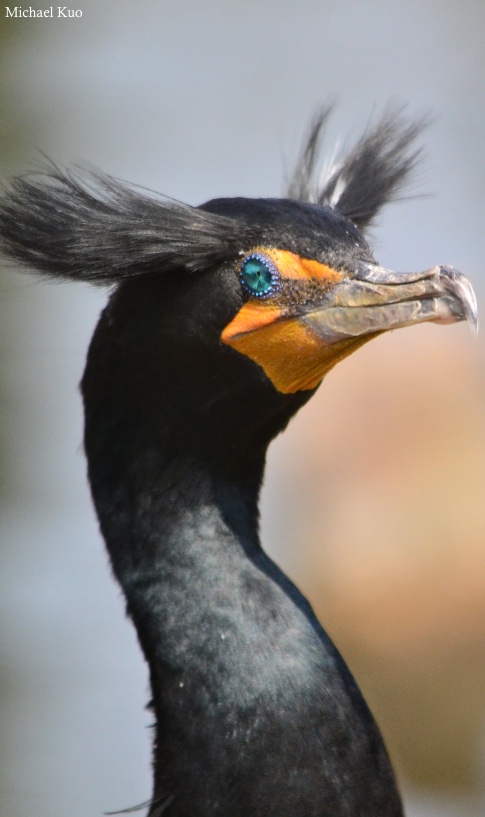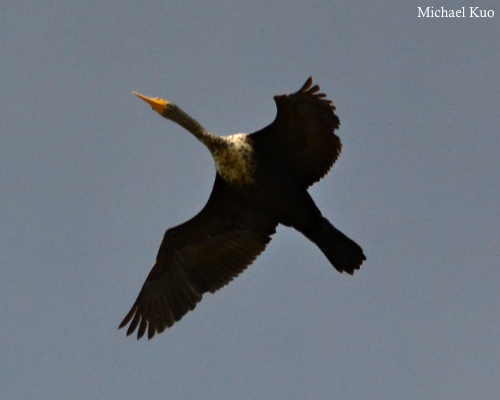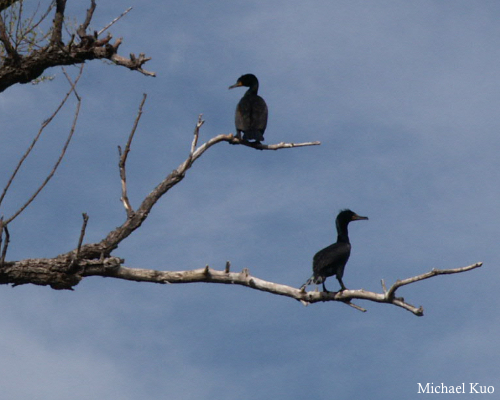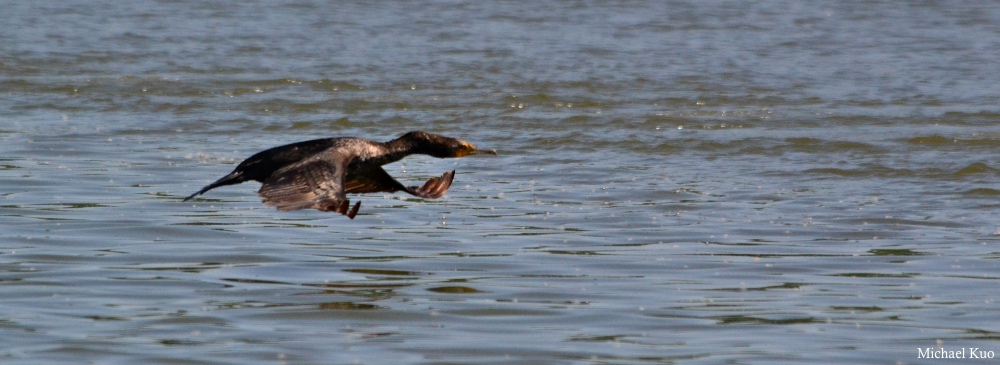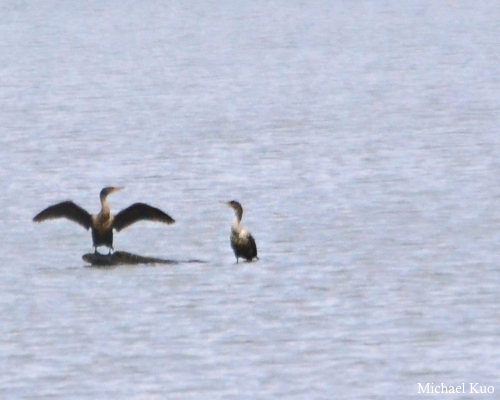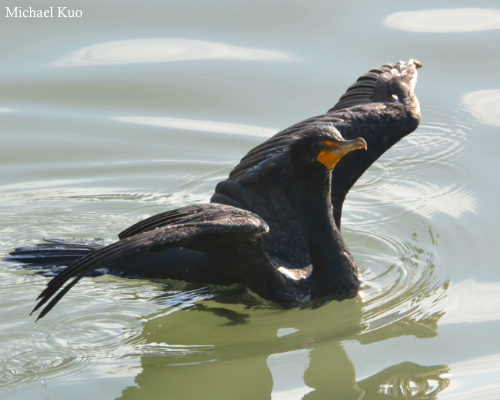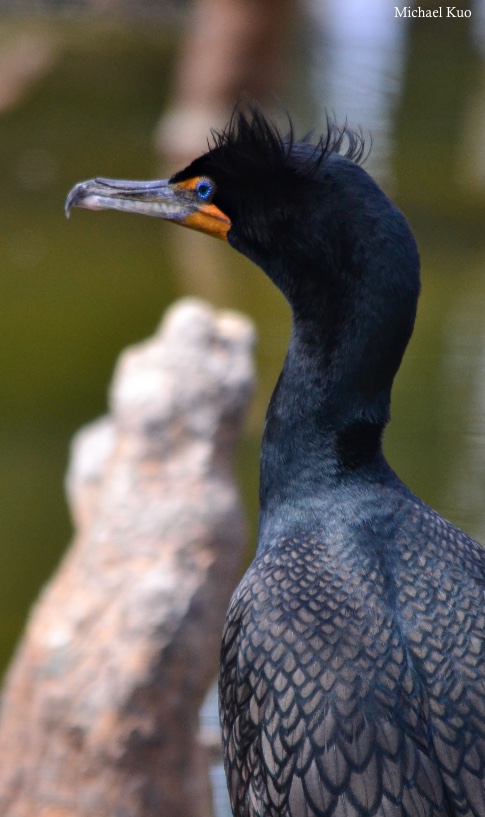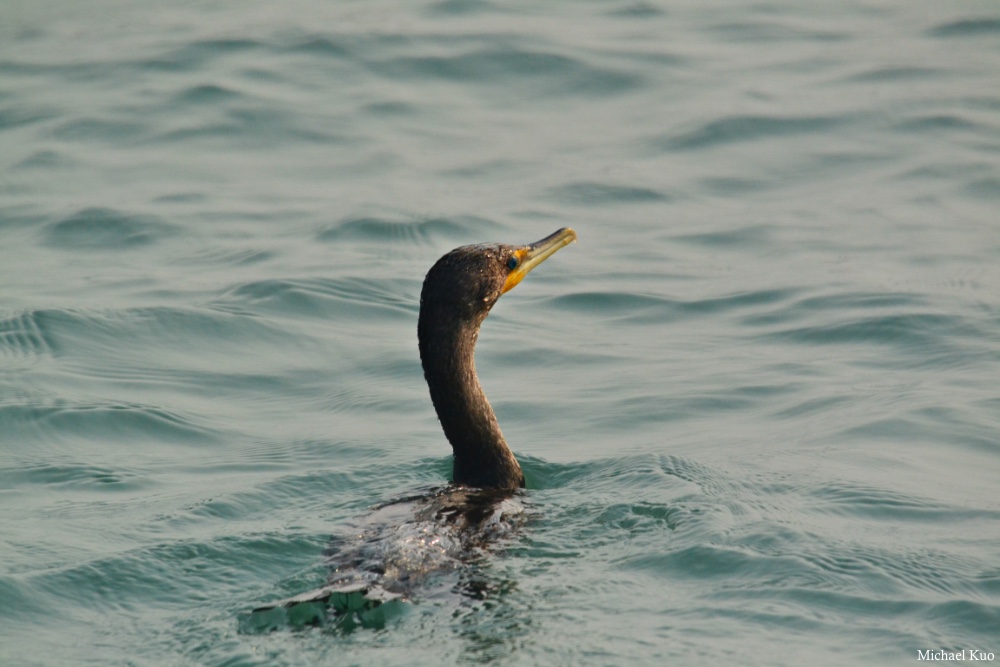|
The double-crested cormorant, Phalocrocorax auritus, is the only cormorant regularly seen in the Midwest, aside from occasional stragglers and lost souls. It is a large, distinctive, blackish water bird with a very long neck, an orange to orange-yellow face, and a long, grayish bill with a hooked tip. Breeding adults develop funky, eyebrow-like tufts on their heads, and are dark brown to black—while juveniles are grayish brown to gray, especially on the neck and chest, and feature pale yellow bills. In flight, the double-crested cormorant keeps its neck slightly bent. Cormorants eat fish almost exclusively, and dive for them in shallows and mid-depth waters, snagging them with the very sharp "fish hook" on the end of their bills. Wing spreading (see illustrations below) is an often seen behavior for the double-crested cormorant, but its function is not completely understood (by humans); the prevailing, if not completely supported, theory is that the cormorants are drying out their wings after—or even while—swimming. Although mature double-crested cormorants appear black from a distance, a closer view of the plumage on their backs reveals a very beautiful pattern of black and grayish brown, reminiscent of fish scales. In central Illinois, where we live, we see cormorants regularly during migration seasons—and we see them in northern Michigan in summers.
|
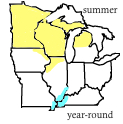
midwestern range
|
|



